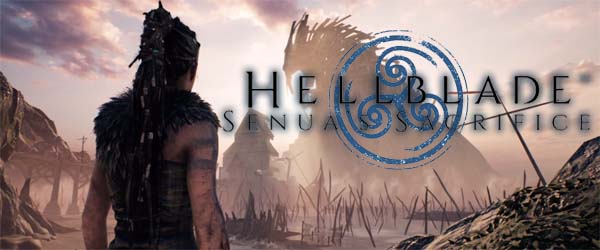
Ninja Theory is a developer that doesn't have very much work under their belt, but the work that they have done has type-cast them into a very specific niche of games. They got their start with the PS3-exclusive Heavenly Sword, and then went on to develop the rebooted DMC (Devil May Cry). So they specialize in stylish, fast-paced, thumb-blistering action games. Hellblade: Senua's Sacrifice is a bit different though. It still has plenty of hacking and slashing, but it's a much slower, more cerebral experience, and it's Ninja Theory's first game that seems to really be about something.
Death, love, and psychosis
One of the principle gimmicks of the game is its perma-death feature. Early in the game, Senua is afflicted by a black rot on her arm. Each time she dies, the rot grows, and if it reaches her head, then she is lost to the abyss. At that point, the game is over, and your save file is deleted. It's similar to the concept of hollowing in Dark Souls, except this time, the game is very upfront and explicit in informing you that it can put a premature end to your adventure.
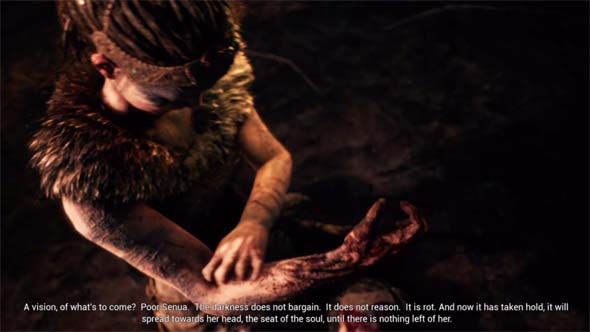
Out damned rot! Out, I say!
Each time you die, the rot grows. If it reaches your brain, it's game over, and your save file is deleted.
This upfront threat puts significant ludic pressure on the player to take Senua's life seriously and to play cautiously and defensively. Not only do you lose some small amount of progress when you die; you may lose all your progress if you are repeatedly sloppy. Ninja Theory isn't completely cruel though. As I progressed through the game, it became apparent that this mechanic is surprisingly forgiving. And if you want to know just how forgiving I think it is, then you can check out the super-duper-secret spoiler section at the bottom of this review. Early in the game, I started to suspect that the rot does not seem to progress if you die repeatedly to the same enemy or trap, so repeat deaths at the hands of a single particularly challenging encounter will not unfairly end your game. In fact, dying in boss encounters didn't seem to progress the rot at all! The combat difficulty is also set to automatically adjust itself by default. So if the waves of enemies become overwhelming for the player, the game will automatically scale them back.

PS Plus members can save scum
using the PS Cloud.
Also, if you happen to be playing on the PS4 (and are a PS Plus member), you can still save scum by using the PS Cloud feature. I would assume that you could also make a copy of your save file for the PC version. So you can use that for insurance if you want. Don't let the threat of perma-death stop you from playing this game.
The voices told me to
The second, and arguably more important, major gimmick of Hellblade is that the player character is a mentally and emotionally traumatized person who is suffering from severe psychosis. The most obvious manifestation is via voices in your head. The advice and information that these voices provide will even vary and will often conflict... [More]
b5fe948d-7b8b-4297-9a9f-28a743d532f9|2|5.0
Tags:Hellblade, Hellblade: Senua's Sacrifice, Senua, mythology, Norse mythology, Hell, Viking, Celtic, Pict, psychosis, hallucination, puzzle, rune, save scum, perma-death
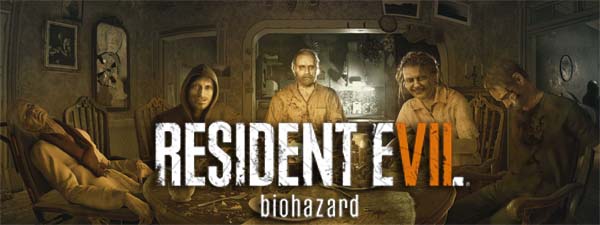
It's been a long time since I've given a crap about Resident Evil. I loved the classic Resident Evil games. The Play Station original is a foundational game for me, and jump-started my interest in horror and the macabre. I felt like the series jumped the shark with Resident Evil 4, however, and my interest in the series tanked with its abandonment of horror in favor of schlockey action-shooter gameplay. I played through Resident Evil 5's co-op with a friend, but didn't really enjoy myself, and after playing the abysmal demo for RE6, I skipped that one entirely.
So I was genuinely excited by Resident Evil VII: Biohazard. The popularity of first-person horror games, and the phenomenon that was P.T. / Silent Hills (not to mention the success of Resident Evil REmastered on Steam) obviously seems to have kicked Capcom in the butt and reminded them that there is still an audience for genuine horror games - an audience that mainstream gaming has neglected for most of the last decade. I'm not sure if development of REVII started as a response to P.T., or if it was already in the works following the success of games like Amnesia, Outlast, and Alien: Isolation. Either way, it's good to see major publishers embracing the genre again.
The family's new - but familiar - mansion
This new Resident Evil really does go back to the franchise's roots. The early hours of the game actually feel a lot like a combination of the original Resident Evil and Resident Evil 3: Nemesis, but updated with a first-person camera and a lot of modern horror contrivances. Long-time fans of the series will recognize the safe rooms and item-boxes. The classic health status indicator is now part of a watch on the character's wrist that you can see whenever you pull up your inventory. There's a foyer with a balcony. Doors are locked by silly, esoteric puzzle mechanisms that require themed keys, crests or various other stand-ins for keys. There's even a booby-trapped shotgun to tease you at the start of the game. Some of these elements of design feel appropriate, while other ham-fisted call-backs admittedly feel like the developers were trying too hard.
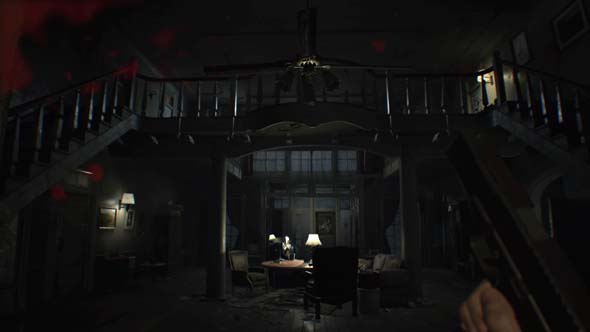
The mansion is new, but has many call-backs to the first game.
The map is well-designed, with its claustrophobic hallways, shortcuts, and lots of visual detail. Lighting is excellent, though the game is a bit too dark at the recommended brightness level (at least without a flashlight), and it becomes washed-out at higher brightness settings. Sound design is also quite exceptional, with the game giving great audio feedback (especially for the pursing stalkers). I also like a lot of the little details, particularly how using a key to unlock a door takes a small amount of time, during which you are vulnerable.
The family also makes for some excellent antagonists, especially compared to the likes of stupid, campy villains like Albert Wesker and Salazar. These villains have a lot of character, and there's enough detail in the mansion to give a sense of who these people might have been before they went off the deep end: the collectible football bobbleheads, for example. And on top of that, they are genuinely disturbing and threatening, and the whole game would probably be scary enough if you just spent the whole time avoiding them and trying to escape their murder house.
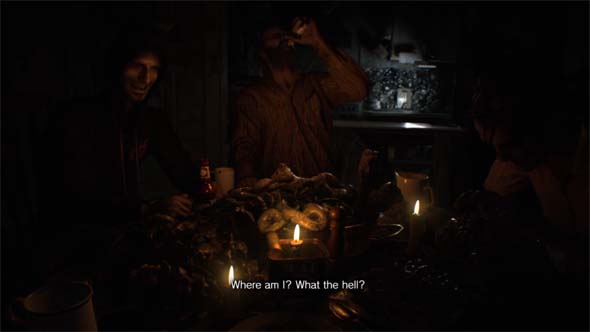
The family makes for genuinely disturbing villains that put RE's earlier villains to shame.
The save system is kind of an odd hybrid of the classic save system and more modern checkpoint systems. The logistics of the classic system have been scaled back, as you no longer require a consumable item (ink ribbon) to manually save (at least not on the default difficulty). But the game will also checkpoint you at certain points, and it maintains a single autosave slot with your checkpointed progress. So if you die to one of the obnoxiously-hard bosses, you don't have to go back a whole hour to your last manual save; instead, you get to restart at the most recent checkpoint.
However, the manual saves still have value, because Biohazard is structurally very similar to the original Resident Evil - both superficially and in terms of gameplay... [More]
a4e07563-fcc1-4e63-88fa-f5d8f517792b|1|5.0
Tags:Resident Evil, Biohazard, Resident Evil 7: Biohazard, Capcom, horror, survival horror, shooter, first person, inventory, resource management, mansion, autosave, save system, puzzle, logistics
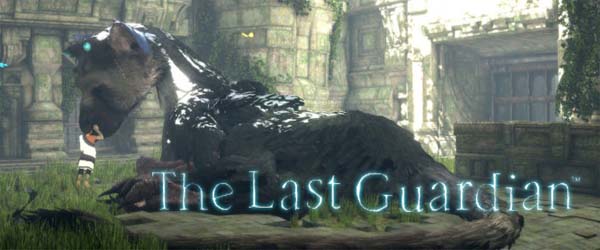
Being the follow-up to a masterpiece is no small order. Being the follow-up to two masterpieces is a Sisyphean task. Ico is a masterpiece of its time. Fumito Ueda and SIE Japan managed to follow that game with Shadow of the Colossus - a masterpiece of even higher order. The bar was set tremendously high for the team's third project: The Last Guardian. Multiple delays, a change in platform from PS3 to PS4, and Fumito Ueda's departure from Sony squashed a lot of the hype for the game. Might the game turn into vaporware? Or might it release in a condition analogous to Metal Gear Solid V?
On the surface, The Last Guardian comes off as being a mash-up of Ico and Shadow of the Colossus. Superficially, it's much more in-line with Ico: you play as a small boy who must guide a companion through a maze of environmental platformer obstacles and adventure puzzles. The catch this time around is that the companion happens to be a giant animal that you can climb and ride on.
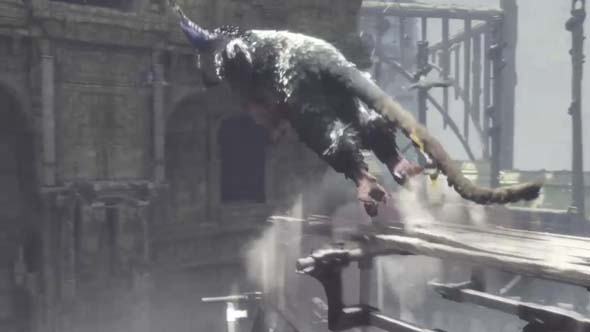
The Last Guardian share more with Ico, but your companion is a giant creature that you climb and ride on.
The big difference though, is that The Last Guardian is sort of an inversion of the gameplay of Ico. In Ico, the player character had to guide a helpless (some even speculated she is blind) princess through a castle and defend her from shadow monsters that try to drag her away. In The Last Guardian, however, it is the player character - the boy - who is mostly helpless. True, you have most of the agency and are guiding Trico through the maze. But Trico is the one with all the power, and your progress is often dependent on Trico getting you past obstacles.
This point is most hammered home by the game's combat mechanics - or rather, its almost complete lack thereof. The boy can't fight off the stone knights that hunt him down. You can only run away, or let Trico smash them into dust for you. If they catch you, they drag you off to a nearby mysterious blue doorway (a parallel to the smokey portals that the smoke monsters dragged Yorda through in Ico), and all you can do is mash buttons to kick and squirm. Ico and Shadow of the Colossus experimented with player agency by making the player question the motivations of the character and wonder if maybe you're doing more harm than good. The Last Guardian toys with agency in other ways. In this game, you, the player, are the helpless tag-along character in an escort quest. You get a glimpse through the eyes of Yorda from Ico or Ashley from Resident Evil 4.
The boy can't fight back, he can only kick and squirm - much like Yorda from Ico.
Not entirely though. The player and Trico make mutual contributions to progress, and their contributions are shared much more than Ico and Yorda. Much like how Yorda could occasionally open the magically-locked doors, the boy in Guardian also has to pull levers and open doors for Trico to pass from room to room. The boy also has to destroy glass eye murals that mesmerize and terrify Trico to the point of paralysis. The boy also hunts down barrels of [supposedly] food for Trico to eat whenever Trico is tired or wounded. But then there's also parts of the game in which the boy simply hops on Trico's back, and Trico leaps away to the next puzzle area without the player having to do anything... [More]
54c716c5-4407-4898-bee0-0725c5a7ce3e|1|5.0
Tags:The Last Guardian, Team Ico, Fumito Ueda, puzzle, platformer, Trico, child, escort quest, Ico, Shadow of the Colossus, PlayStation 4, Sony, exclusive, vaporware, Achievement unlocked
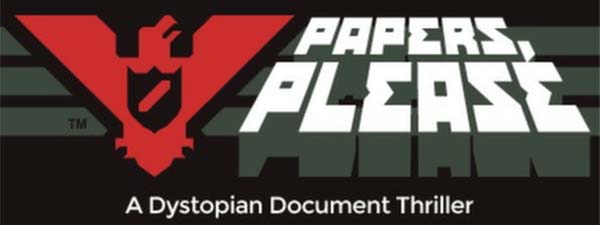
With Dark Souls III behind me, and while I wait for the inevitable time-eater that will be Civilization VI, I wanted to go back through my backlog of smaller games. Papers, Please is a simple little indie title that has been out for almost three years (at the time of this writing), and has been sitting in my Steam library, unplayed, for quite some time. Now seemed like as good a time as any to rectify that.
I just paid to go to a second job that I don't get paid for
Papers, Please is a funny little game in that it is so dedicated to its theme that the game actually does start to feel almost like a real job. You have to click and drag to open up documents, sort through papers, check dates, make sure the document was issued in a valid city, and so on. It's a lot of mundane work, and if you miss any little detail, then you have an omniscient boss who will print out a citation. I quickly came to anticipate the sound of a citation being printed with a Pavlovian anxiety after sending applicants through, even for the ones whose documents I thought I had thoroughly checked. You get two warnings before your omniscient boss starts docking your pay, which keeps constant pressure on you to try to be as close to perfect as possible. Paying for this game is almost like paying for a second job that you, yourself, don't get paid for. And it's kind of a shitty job, at that.
It's not just the potential immigrants' problems that you have to think about. You have your own problems. Every day, you go home with a measly salary, and you have to pay daily for rent, heat, and food for yourself and your family. Maybe you kids or wife get sick, and you have to spend some precious extra dollars on medicine that night. And if your pay gets docked for letting in people with invalid passports, then you might have to go that night without food or heat or medicines, which will just make your family more likely to get sick.
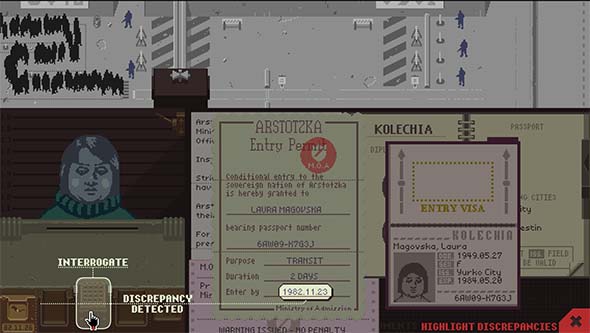
Hooray! A game in which I get to shuffle paper work and perform bureaucratic government functions!
You'll also have people with invalid documents begging to let you in to the country so they can be re-united with their families, or because they're political refugees who will be killed if they go back to their own country... [More]
560b72c3-4d76-45af-9bd1-68ecbaedde74|0|.0
Tags:Papers Please, indie gaming, 3909, Lucas Pope, immigration inspector, passport, customs, checkpoint, bureaucracy, interrogation, puzzle, Arstotzka, war, civilian, terrorism, spy, dystopia, communism, noire, PC, Steam

Since I have some extra time off for this holiday season, I'm trying to go through some of my backlog of shorter indie Steam games in between bouts of Cities: Skylines and Beyond Earth: Rising Tide. One such game is Facepalm Games' 2013's sci-fi indie hit, The Swapper, which I picked up in a Steam sale like a year ago. The game has also been ported to many consoles, including the PS3, PS4, Vita, XBox One, and Wii U, and the ports were developed by Curve Digital.
Making my clones do the deadly work
The Swapper seems to owe a lot to Valve's mega-hit Portal. Both games' central mechanics revolve around the player character using a futuristic non-weaponized gun (with 2 settings) to solve platforming puzzles and explore an environment. Portal is in full 3-D, whereas The Swapper is a more traditional 2-D side-scroller. The bigger difference however, is that the gun of The Swapper doesn't fire portable wormholes; instead, it allows the player character to instantly create clones of herself, and to swap her consciousness into one of the clones. Once created, these copies move in tandem with the copy that is currently being controlled by the player. The key to the puzzles is to maneuver yourself so that your clones can reach otherwise inaccessible areas or activate switches.
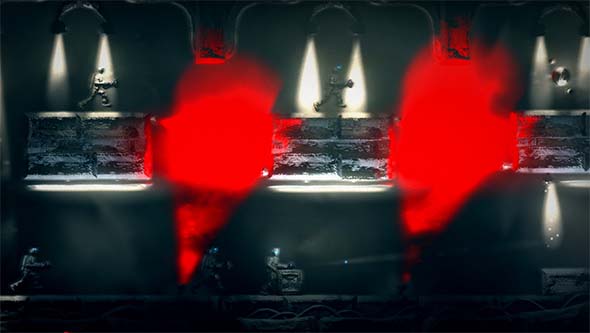
All your clones move in synchronization, making relative spacing very important for solving puzzles.
The space station is laid out in an unbelievable, but serviceable, series of puzzle rooms joined together by modest platforming sections. At first, the platforming between puzzles is interesting because it kept me thinking along the lines of solving puzzles rather than just moving from place to place. But there's a lot of exploration and backtracking, and having to navigate the corridors between puzzle rooms quickly became tedious once using the swapper gun became second nature and automatic. Fortunately, the game provides handy teleporters to allow you to quickly move to key sections of the station, so the backtracking never became as problematic as it could have been.
The puzzles themselves start off fairly simple, requiring that the player simply point the gun and clone herself in order to reach a platform or cross a gap and collect alien orbs that you use to unlock new areas of the space station. The challenge quickly escalates. Soon, obstacles start getting thrown at you, such as colored lights that prevent certain operations of the swapper gun, forcing you to have to find more elaborate ways around the lights in order to reach your destination. You have to start using careful positioning, choreographed movement, gravity, momentum, and inertia in order to successfully solve the puzzles. And all this escalation seems to happen naturally based on the increasing complexity of the levels, rather than through the introduction of new mechanics or controls.
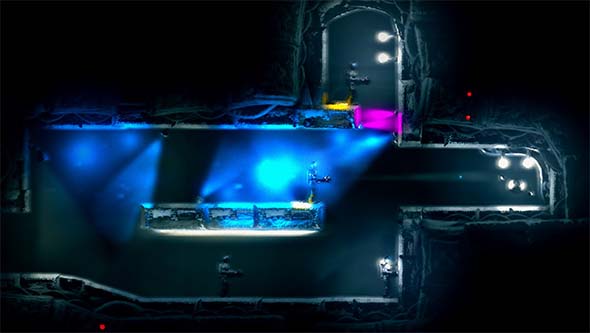
About an hour into the game, I ran into a puzzle that took almost an hour of trial-and-error for me to solve.
About an hour into the game, the difficulty suddenly spiked, and I ran into one puzzle in particular that took me quite a while to figure out. I even had to leave it and come back to it later with a fresh perspective. I thought maybe I was missing some kind of upgrade or needed to learn some technique that the game hadn't tutorialized yet, but that wasn't the case. Eventually, I figured it out, and the solution seemed head-smacking obvious, but I probably spent a good hour on that one puzzle (approximately half of my time with the game, up to that point).
There are also some other sci-fi mechanics such as the occasional zero-g spacewalk, gravity inversion (allowing you to "fall" up and walk on the ceilings), and so on. These all flow fairly seamlessly into the game; although, I did feel that the gravity inversion felt a little unnecessary when it was introduced. After all, the game teaches you fairly early how to use the swapper gun to effectively fly by repeatedly swapping to clones created above you. This "flying", is, however, limited by the number of clones that you can create, and it's still subject to being blocked by colored lights. So gravity inversion felt superficial when introduced as a means of navigating the station. Once the gravity inversion was introduced into the puzzles, though, I recognized its value.
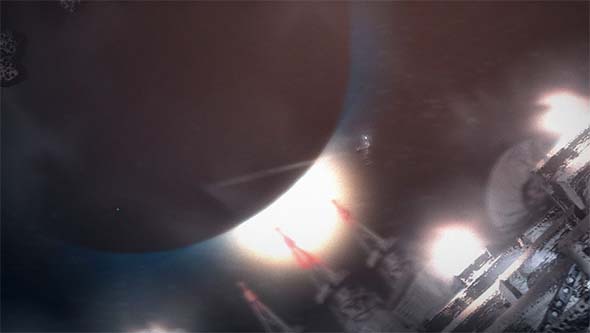
You'll also perform the occasional zero-G spacewalk or invert gravity.
Any problems that I had in solving a puzzle were purely intellectual. Every control and mechanic is intuitive and comfortable, movement is responsive, and I almost never struggled with making the character do what I wanted her to do. All in all, the game plays near-perfectly. The puzzles are appropriately challenging; although, the exploratory nature of the game means that difficulty can wobble back and forth a bit depending on which puzzle rooms you reach first... [More]
8b3a77a8-4dc7-429b-b9ce-44d928af9f86|2|5.0
Tags:The Swapper, Steam, indie gaming, puzzle, platformer, science fiction, cloning, consciousness, identity, self, brain, mind, mind-body problem, space, sentient, alien, Portal
|

| 12 | | | | | | | 60 | | 11 | | | | | | | 55 | | 10 | | | | | | | 50 | | 09 | | | | | | | 45 | | 08 | | | | | | | 40 | | 07 | | | | | | | 35 | | 06 | | | | | | | 30 | | 05 | | | | | | | 25 | | 04 | | | | | | | 20 | | 03 | | | | | | | 15 | | 02 | | | | | | | 10 | | 01 | | | | | | | 05 |
|